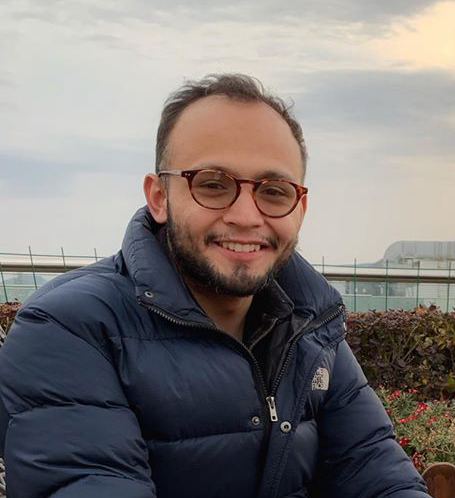Entertainment
Kathmandu has a vibrant arts scene, only if one knows where to look
Nexus also organises a regular open mic night, where anyone can go and share what they have. A few weeks ago, the show kicked off with two stand-up comedians.
Asmod Karki
Located in the northeast corner of Beijing, the 798 (Qi Jiu Ba) district is host to the ruins of heavy machinery factories from the Soviet era. But, between leaking rusty pipes and long gloomy corridors are vibrant cafes, galleries, and funky art pieces. This district is what one would call ‘hip and trendy’, where Chinese youngsters with tattoos and big-framed glasses wander between the shops and exhibits.
As with many initiatives in China, the government planned to revive this industrial corner of Beijing. The Central Academy of Fine Arts took over these ruined factory spaces in 1995, and over the course of years, artists have begun to flock in. With the 2008 Olympics, the government invested even more in the district, resulting in a vibrant modern art scene in the metropolis.
But why talk about China when this piece is about Nepal? The intention here is not to point a finger at the ‘Nepali government’ for not doing its share. There are enough of those narratives. The purpose, rather, is to point out what Nepal, more specifically Kathmandu, has done despite the limited state support.
Nexus as a case in point
Ashmina Ranjit and Basanata Ranjitkar describe Nexus as a café where people from various sections of life converge. But there’s more to it than just a café. The Nexus Café building in Jhamsikhel also houses Lasanna, an arts space that regularly hosts workshops and trainings for artists and ‘creatives’, ranging from yoga workshops to residencies for both Nepali and foreign artists.
Nexus also organises a regular open mic night, where anyone can go and share what they have. A few weeks ago, the show kicked off with two stand-up comedians. Both were men in their early twenties and it was one of their first performances in front of an audience. Later, there was a guest lok-dohori performance followed by some poetry and even an incoherent ramble.
After the performances, the stand-up comedians mentioned how lucky they considered themselves to have a platform such as this open mic, where they could just go and express themselves. I am witness to that myself. Ashmina ji asked me—lovingly coerced would be a more fitting term—to share something. I shared a few poems, which I barely do in public. Having that platform to perform means more incentive to create and showcase in the days ahead.
A bustling arts scene
Kathmandu is not Bejing, and the capacities of our governments are different. The existing state structures aren’t encouraging either. Lalit Kala Campus is in a bad shape, the Nepal Arts Council has a budget crunch, and the Nepal Academy still basks in its past glory. Regardless, the vibrant art scene in Nexus demonstrates what a ‘small’ initiative from a few concerned citizens can do in places where the capabilities of the state are limited. Yet, the quantity and quality of art-related events happening in the Kathmandu Valley is testament to what non-state actors are capable of.
The numerous public and semi-public spaces here host regular musical performances. There are jazz performances from the Kathmandu Jazz Conservatory, and we even have international artists like Damien Rice performing just recently in Patan. There are also mega events like Echoes in the Valley. This festival, which first took place in 2016, included day-long live performances supplemented with local ethnic food on the streets of Ason. This year, the organisers added symposiums where experts from Nepal and around the world shared ideas on music, education and access.
Photography is another art form that is vibrant in Kathmandu. Various galleries in the Valley regularly host national and international artists. Photo Kathmandu is such mega event that recreates a festive mood in the Valley—from exhibitions by artists from around the world to workshops and even award galas.
Another important event is the Kathmandu Triennale, a literary and arts festival, where there are performances, exhibits, and symposiums on anything and everything related to art.
Arts everywhere
A quick roam around the streets of Patan, Bhaktapur Durbar Square, and Basantapur showcases different forms of arts through its architecture in traditional buildings, temples that hosts centuries-old idols and shops displaying many handicraft products.
The many jatras that take place around the Valley also reinvigorate traditional forms of art, handed down from one generation to the other. The performance of different traditional Newar orchestral groups on the streets during festivities is like a concert out in the open for the public. Similarly, dance performances during Lhosar and Maghe Sangrankti celebrations at Tundikhel are also a showcase of indigenous art.
Kathmandu’s art scene, in its own unique way, is perhaps one of the most vibrant you could find in the world. As much as there is a need for constructive criticism, a culture of appreciation of what we already have can go a long way for our collective well-being and psyche.
We just need to keep our eyes and ears open. There is art everywhere—around and inside us. Learning to live a life of appreciation is perhaps an art itself.




 12.12°C Kathmandu
12.12°C Kathmandu










